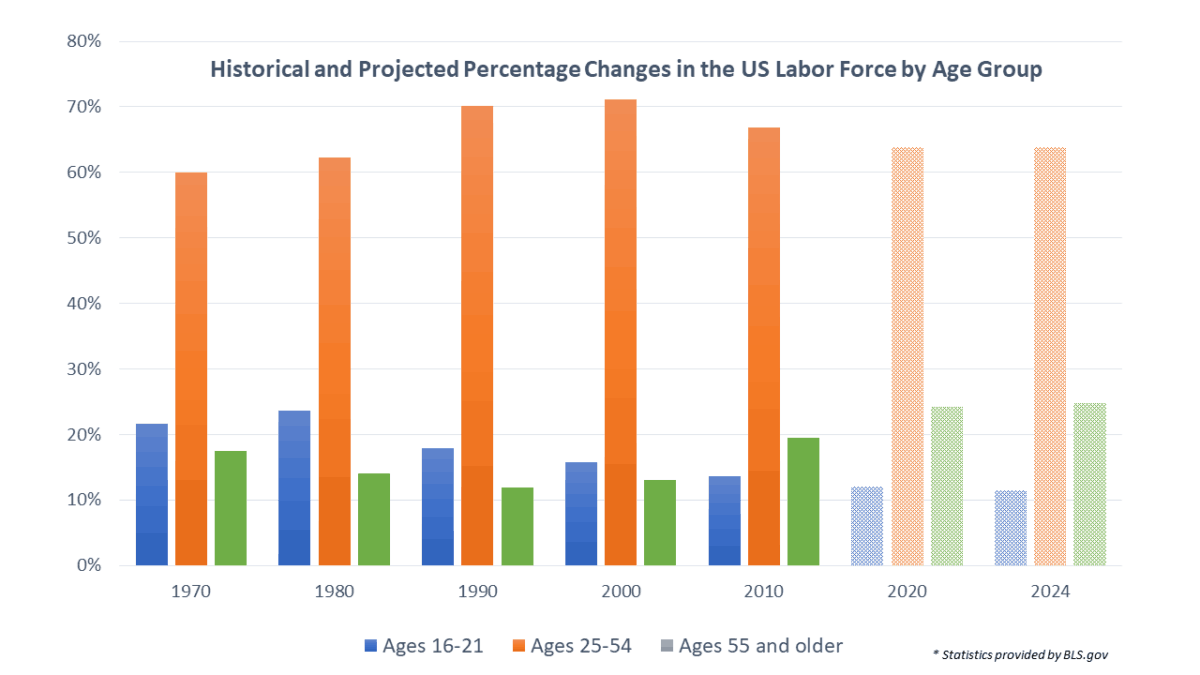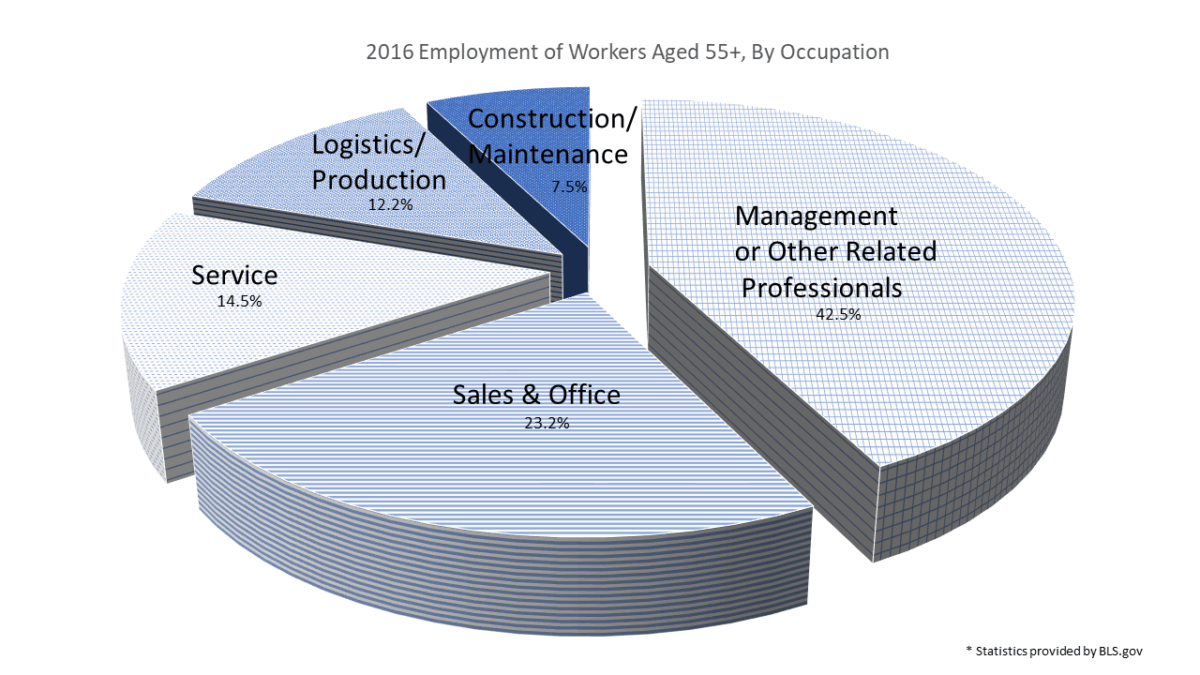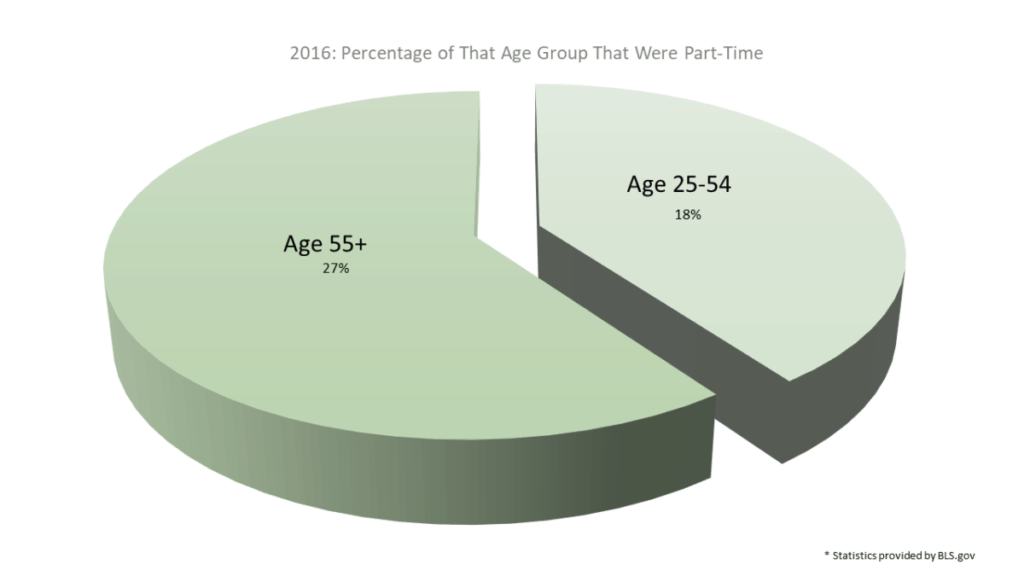If you’ve never thought about a strategy for leading older employers, it might just be that you’ll want to have that strategy ready sooner versus later.

The 6 key elements needed to effectively lead older employees are:
- Assess skills
- Show value
- Provide support
- Communicate
- Respect and seek respect
- Be consistent
Older workers can bring a lot of great qualities to a group, but there may be some different dynamics, as well. That point is clearly made through the 2015 movie, “The Intern,” starring Anne Hathaway and Robert De Niro.
Initially the owner and manager, Jules Ostin, didn’t realize the value of Ben Whittaker, a retiree who lands a job as an intern at an online design company. Jules avoids interaction with him, not sure how to act around him. Then, they interact in such a way that makes her realize, while his approach is distinctly different than other younger employees, he is extremely valuable to her business, and to her personally.
Let’s take a closer look at these elements:
(1) Inventory their skills and start from there
Have a participatory goal-setting session with the older worker, where your expectations of results are defined, and their buy-in to the results, and the steps to get there takes place. Understand what they do well, and where they need more guidance, and ensure that they understand, as well. Provide training for the areas they may need improvement.
(2) Value
Who doesn’t appreciate feeling valued? Aging workers who work for a younger boss may have trepidation about their abilities, how they will be perceived, and whether or not their work will be valued. On the other hand, they may feel like they have very strong skills that are somehow being dismissed.
“Understanding your employee’s perspective can go a long way towards increasing productivity and happiness.”
~ Kathryn Minshew
Calling on their experience and showing appreciation, letting them know they are valuable to the team, can go a long way in helping them feel like their contributions matter.
Also, what motivates them? Spend some time discovering what makes them tick, what they value. Find out what they consider to be rewarding at work, what positive consequences you can provide for them when they’ve reached their objectives.
(3) Support
Providing support to them means empowering them to get the job done in their way, focusing on the end goal. Sometimes, it can be a little tricky to find the sweet spot in providing support; giving too much guidance can lead to micromanagement, or the perception of it. Assuming guidance isn’t needed can come across to the employee as a lack of concern or interest. Finding the right balance will depend on your own personality along with theirs.
(4) Communicate
Communication is a key element to success throughout all of these steps. Asking for their opinions can help validate your appreciation for their experience. Asking questions shows deference for what they have to contribute. Being open to feedback and letting them feel comfortable providing it sets the stage for healthy circular communication.
(5) Respect and seek respect
While all of the previous steps help to show you respect your older worker, you’ll also want respect from them. They need to know that, while you and they may tackle projects differently, you are accountable for results. They don’t always have to agree with your methods as a younger boss (and with different experiences in different stages of life, they likely won’t), but you do want to command respect for the initiatives and your efforts to get there.
(6) Be consistent
We’ve all heard it before: “You can’t teach an old dog new tricks!” Well, even though it can be done, why is this such a well-known phrase?
It’s all based on the idea of expectations. As it relates to employees, consistency in behavior establishes a comfort level in what can be expected. If an employee performs as expected, they should be comfortable with how the manager will react, just as if that same employee does not meet the expectations that were mutually agreed to, they should be comfortable with what to expect by way of their employer’s reaction.

This graphic shows that managers who consistently are committed, sincere, reliable, and do what they say, build trust and are more apt to have a productive team.
A study conducted by the Academy of Management further affirms the need for consistency in leadership through a recently-conducted study. They looked at what workers considered fair and unfair manager practices with varying consistency over time. They concluded,
“Contrary to the intuitive notion that more fairness is always better, our work shows that being treated consistently unfairly can be better for employees than being treated fairly sometimes and unfairly at other times.” They found that the inconsistencies in fairness led to physiological stress. They also determined that those managers who exhibited more self-control were the ones who demonstrated more consistency with fair treatment of their employees.”
Statistics on older workers:
The Bureau of Labor Statistics studied the aging workforce in 2017, and here is some of what they found:
- In 2014, 40% of those 55 or older in the US are working or looking for work. (Known as the labor force participation rate.)
- Through 2024, the labor force participation rate is expected to increase the most in the age segments that are comprised of people 65 and older
- In comparison, the age segments of those people younger than 65 are expected to have a labor force participation rate that changes very little, or may even decrease.
Let’s take a look at what they saw with the labor force back to 1970, and what they’re predicting is ahead:

This increase is largely because of the amount of baby boomers (people born between 1946 and 1964). A large segment of this group of people is expected to continue to work even after they start receiving their social security benefits.
They also looked at the specific occupation of employees who were 55+ in age in 2016. Here’s what their numbers showed:

Interestingly, but not surprisingly, here’s what they found when looking at the numbers of part-time workers with two different age groups:

Reasons why people are working longer:
- Life expectancy has increased due to improved overall health and advances in health care/medicines
- Changes in vehicles that are commonplace for saving has changed
- pension plans offered by employers are rare
- social security is in jeopardy of running out of money as supplemental income for those who retire (and, because of this, the age at which social security can be available to seniors is continually being questioned)
- all individuals, including those who are not financially savvy, are expected to save to fund their living in retirement
- The population, as a whole, is more educated, fueling their desire to continue to work at older ages; it fuels the need for older employees in markets where their skills may be in short supply
- Cost of living increases, coupled with lifestyle expectations provide the reasons why many stay in the workforce longer
Did you know?
47% of those currently working are planning to retire later than they thought they would when they were 40. The people surveyed for this statistic cited financial need, the need for fringe benefits, and their health as the primary factors in this change.
Almost 50% of workers 50+ in age say their boss is younger than they are. Employees with older bosses are less likely to report they have reduced their hours than people with younger bosses. The employees who have managers older than they most likely consider age an asset to their career. (1)
“Aging is not lost youth but a new stage of opportunity and strength.”
Betty Friedan
Source:
(1) Associated Press-NORC Center for Public Affairs Research

